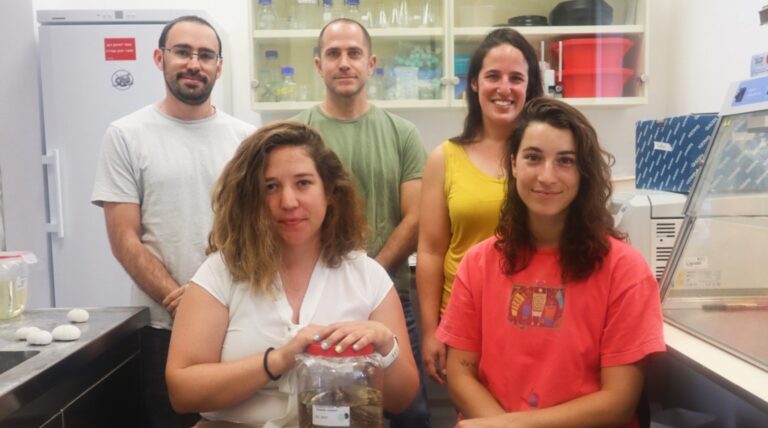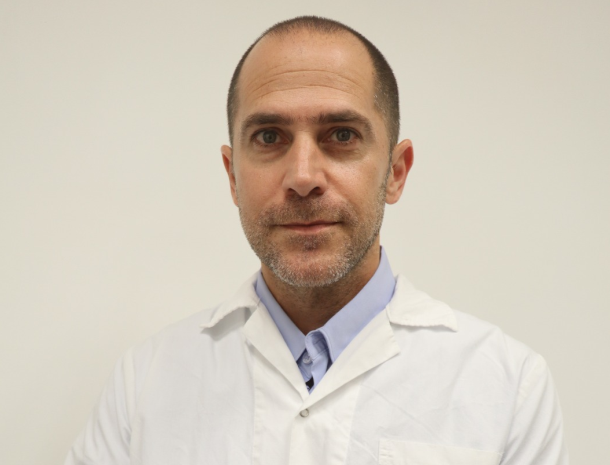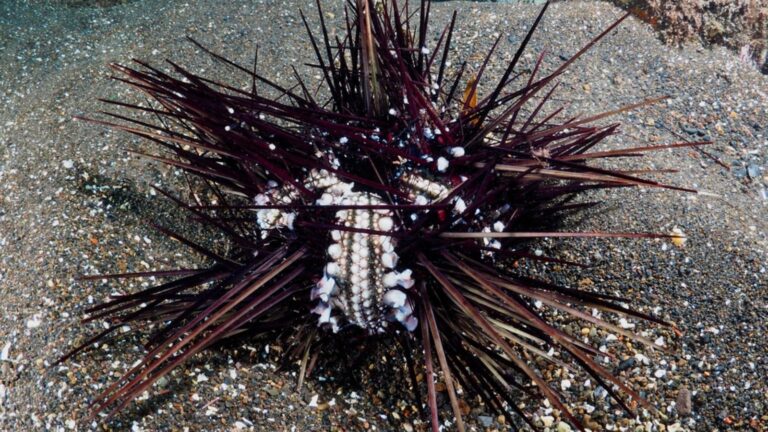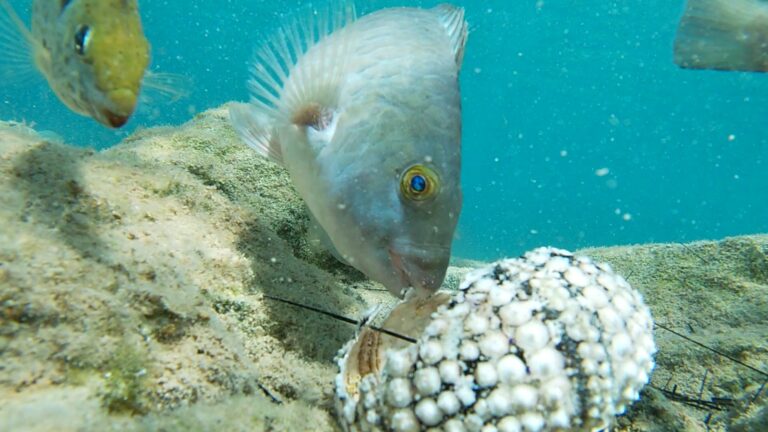Israeli scientists are calling for urgent action after it was discovered that a deadly epidemic has decimated the black sea urchin population in the Gulf of Eilat and the Mediterranean Sea in just a matter of months.
In a series of disturbing studies from Tel Aviv University, published in Frontiers in Marine Science and Royal Society Open Science, it was revealed that within two months the entire population of black sea urchins – Diadema setosum — has been wiped out in Eilat.
The epidemic was so severe that despite the fact that thousands of long-spined black sea urchins lived on the northern shore of the Gulf of Eilat, and they were the dominant urchin species in Eilat’s coral reefs, today only skeletons are left.
The same is happening at other sites in the gulf, including off the coast of Jordan, Egypt and Saudi Arabia. Greece and Turkey are also affected.
Researchers say the die-off, which may have been caused by the pathogenic ciliate parasite, is likely to have a devastating impact on the coral reefs as sea urchins, and particularly the Diadema setosum, are vital for maintaining the ecosystem of the reef.
“Diadema setosum are considered key species essential for the healthy functioning of coral reefs,” said Dr. Omri Bronstein from the School of Zoology, Wise Faculty of Life Sciences, who led the studies with PhD students Rotem Zirler, Lisa-Maria Schmidt, Gal Eviatar and Lachan Roth at Tel Aviv University.

“The sea urchins are the reef’s ‘gardeners’ – they feed on the algae and prevent them from taking over and suffocating the corals that compete with them for sunlight. The threat to coral reefs is already at an all-time peak, and now a previously unknown variable has been added. This situation is unprecedented in the entire documented history of the Gulf of Eilat,” he added.
Broodstock population vital
Bronstein called on authorities to urgently establish a broodstock population for these sea urchins so that, if needed, they can be returned to nature in the future.

“The window of opportunity for preserving a healthy population of this species in Eilat has already closed. If we want to establish a broodstock population, we must do it today, by preserving healthy individuals from the Israeli Mediterranean – before the disease, spreading from the north, reaches this area,” he said.
“This is a complex task, but it is absolutely necessary if we wish to ensure the survival of this unique species that is so critical to the future of coral reefs,” he added.
The black sea urchin is native to the Gulf of Eilat, but in 2006 began spreading into the Mediterranean, probably through the Suez Canal. Since 2018, the Mediterranean population has grown exponentially with giant populations of thousands and even tens of thousands found in Greece and Turkey.

The first reports of mass mortality in the sea urchin population began reaching Bronstein several months ago, from colleagues in Greece and Turkey. This immediately set off alarm bells for Bronstein because of the proximity between the Mediterranean and the Red Sea.
“At first we thought it was some kind of pollution or poisoning, or a local chemical spill, from the industry and hotels in the north of the Gulf of Eilat, but when we examined additional sites in Eilat, Jordan and Sinai, we quickly realized that this was not a local incident,” said Bronstein.
“All findings pointed to a rapidly spreading epidemic. Similar reports are coming in from colleagues in Saudi Arabia. In the Red Sea, mortality is spreading at a stunning rate, and already encompasses a much larger area than we see in the Mediterranean,” he added.
Fast and violent
Bronstein said that even sea urchins grown for research purposes in aquariums at the Interuniversity Institute for Marine Sciences in Eilat, and sea urchins at Coral World Underwater Observatory in Eilat, contracted the disease and died, possibly because the pathogen got in through the pumping systems.
“It’s a fast and violent death: within just two days a healthy sea urchin becomes a skeleton with massive tissue loss,” he explained. “While some corpses are washed ashore, most sea urchins are devoured while they are dying and unable to defend themselves, which could speed up contagion by the fish who prey on them,” Bronstein warned.

Researchers believe the ciliate parasite could be to blame.
In the 1980s, a pathogenic ciliate parasite epidemic eradicated the sea urchin population in the Caribbean, damaging the coral reef irreversibly. Once the urchins disappeared, according to Bronstein, algae multiplied without control, blocked sunlight and drastically affected the reefs.
“We must focus all efforts on prevention,” said Bronstein. “We predict that in just a short time, the entire population of these sea urchins, in both the Mediterranean and the Red Sea, will get sick and die.”
A report has been submitted to the Israel Nature and Parks Authority, and emergency steps for protecting Israel’s coral reefs are now under consideration.













